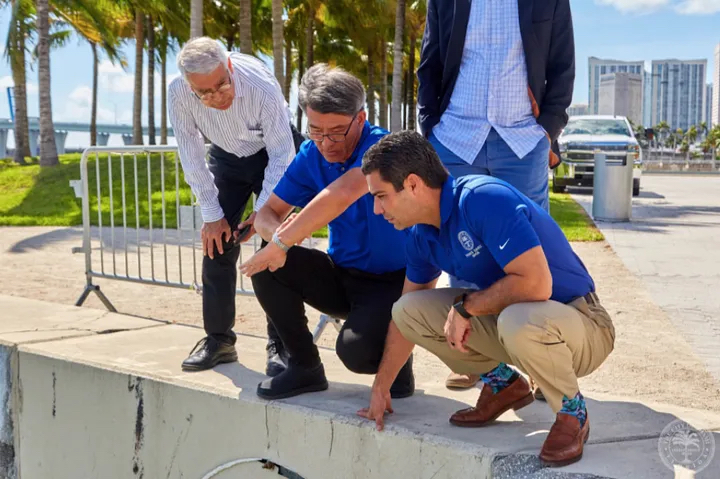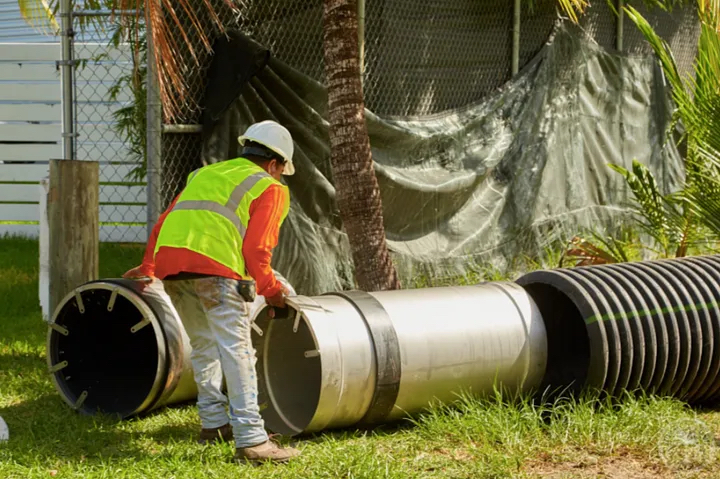Fort Lauderdale, FL, USA
Fast-Tracking Climate Resiliency
Project Type:
Community Engagement, Environment, Infrastructure and Utilities

At a Glance
25.6” – Amount of rainfall recorded in Fort Lauderdale on April 12th, 2023, a new one-day record for the city.
$500 million – Cost of stormwater infrastructure improvements planned across 25 Fort Lauderdale neighborhoods over the next 10 years.
On April 12th, 2023, Fort Lauderdale was unexpectedly inundated by a 1-in-1,000 year storm. More than two feet of rain fell in just 12 hours, the most ever recorded there in a single day. Stormwater infrastructure was designed to handle a maximum of three inches of rain in 24 hours and was quickly overwhelmed, flooding wide swaths of the city of about 189,000 on Florida’s southeastern coast. More than 1,000 homes and City Hall were severely damaged, with water chest-deep in some places.
The unprecedented precipitation coupled with a very high tide underscored how climate change makes storms both more intense and less predictable. For Mayor Dean Trantalis and his leadership team, it also made clear the City needed to make Fort Lauderdale’s stormwater infrastructure stronger—and they needed to do it now.

“We use data to think about everything. It’s all data-driven, from flood mapping and risk modeling to infrastructure planning and asset management. And now we’re really starting to tackle the challenge of figuring out what’s going to flood, when and where.”
“Prioritizing the right climate adaptation projects requires careful location-specific risk assessments. I’m proud of our enhanced infrastructure strategy, and I’m proud that Fort Lauderdale is being recognized through What Works Cities Certification for putting data at the center of our climate resilience work.”
In November 2023 at the State of the City address, the mayor unveiled Fortify Lauderdale, a $500 million initiative to speed up and expand flood-prevention infrastructure projects across the city through 2034. The City had already been planning to upgrade infrastructure in eight neighborhoods before the April 2023 flooding. After the disaster, leaders ramped up data gathering efforts to identify high-risk areas and refine stormwater infrastructure plans for another 17 neighborhoods.
During Phase 1of the Stormwater Master Planning effort, city employees and consultants attended neighborhood association meetings asking residents to mark up a map detailing exactly where flooding occurred. They also gathered flooding data from residents who called the city’s customer service hotline. Internally, the City conducted a comprehensive stormwater asset management inventory, leaning on its GIS team to detail not just the location of every drain and pipe but also all maintenance work done on each piece of infrastructure in recent years.
All of this data informed the citywide stormwater master planning effort, which allowed leaders to prioritize infrastructure projects based on specific needs and risk levels. The result: 25 additional neighborhoods will see flood prevention upgrades over the next decade, more than triple the number that had been set to receive improvements prior to 2023.
“We have to manage through data given the organization’s finite resources. The ability to segment and analyze data in targeted ways is crucial for navigating where resources should go.”
As of August 2024, about half of Phase 1 of the Stormwater Master Plan neighborhoods were complete or in construction. Spanning eight neighborhoods, the plan provides 50 miles of new stormwater pipe, 10 new stormwater pump stations, higher seawalls and enhanced swales, among other improvements. These will help get water out of neighborhoods faster, preventing costly damage. The new stormwater improvements are expected to improve the drainage capacity from 3 inches of rain in 24 hours to 7-10 inches. Fortify Lauderdale also includes developing guidelines that will strengthen outreach to owners of vulnerable properties to help them improve their own climate resilience practices. Together, these efforts are showing residents that when the next storm comes, the City can reduce the intensity, duration and frequency of flooding to roads passable, protect homes and prevent life-changing damage.
“A successful infrastructure resilience strategy needs to be anchored in community engagement and solid data,” Mayor Trantalis says. “We’re determined to maximize the value of every dollar we spend on these projects—there’s no time to waste.”


